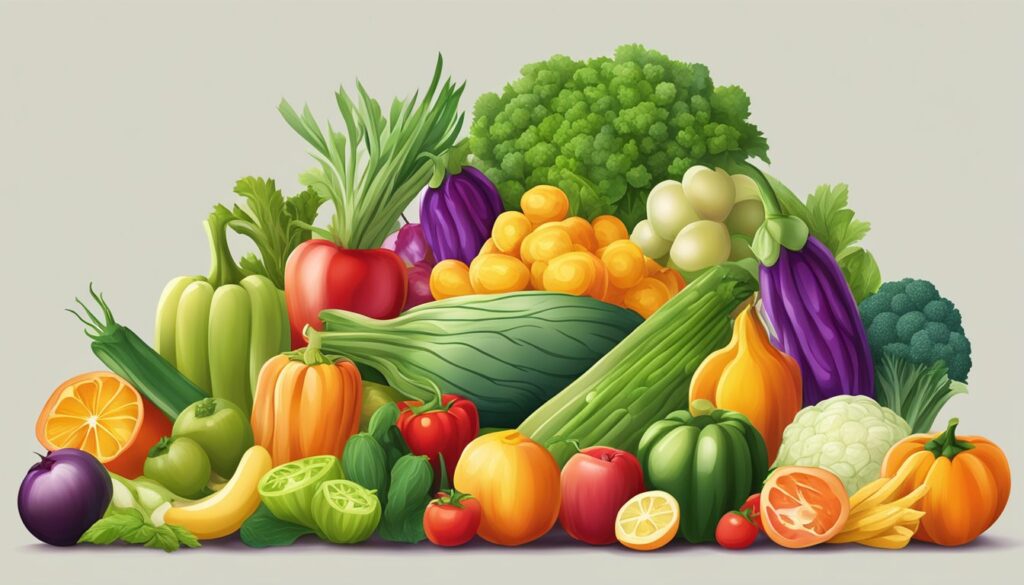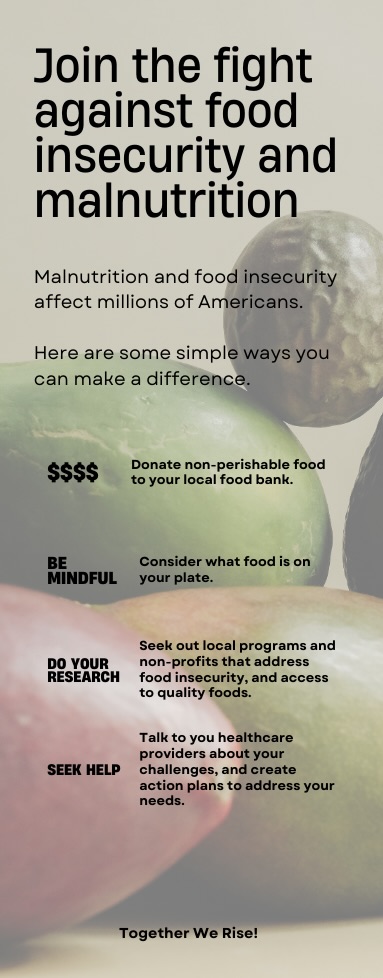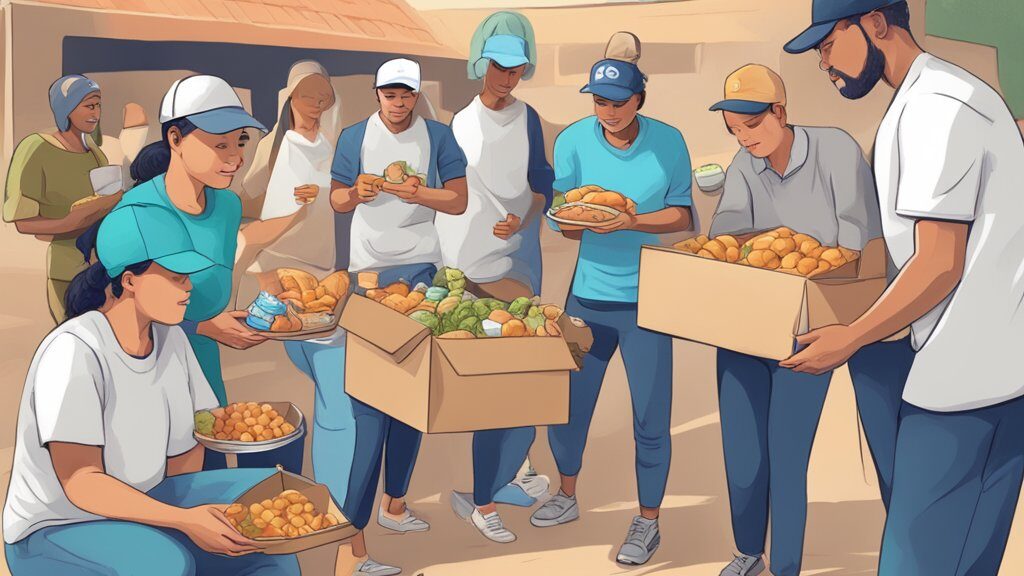Malnutrition in America and Statistics on Hunger: An In-Depth Analysis

Malnutrition is a pressing issue in the United States, affecting millions of individuals and families. Recent data shows that one in 8 U.S. households, or 12.8 percent, experienced food insecurity in 2022. This means that many people do not have reliable access to enough affordable, nutritious food to sustain a healthy life. This statistic highlights a significant public health challenge that cannot be ignored.
Statistics on hunger reveal that food insecurity has a profound impact, particularly on families with children and people of color. In 2022, 17 million U.S. households struggled with food insecurity, an increase of 3.5 million from the previous year. These groups face higher than average rates of hunger, emphasizing the need for targeted interventions and support. Helping those in need means addressing the root causes of malnutrition as part of a comprehensive food policy strategy.
Malnutrition in America often goes hand-in-hand with other health issues, such as diabetes. Individuals facing food insecurity may have to choose between buying food and obtaining medical care. This dual burden of malnutrition and chronic illness exacerbates the health disparities in the nation. Effective solutions must consider the broader context in which malnutrition occurs, ensuring that efforts to combat hunger also support overall well-being.
Defining Malnutrition and Food Insecurity
Malnutrition and food insecurity are critical issues affecting various demographics across the United States. These conditions encompass a range of nutritional deficiencies and barriers to accessing sufficient food.
Types of Malnutrition
Malnutrition is a condition characterized by the lack of necessary nutrients, which can lead to various health issues. It can be categorized into undernutrition and overnutrition. Undernutrition includes stunting, wasting, and deficiencies in vitamins and minerals. Overnutrition, on the other hand, involves excessive intake of certain nutrients, leading to overweight and obesity.
Children suffering from undernutrition may experience stunted growth and developmental delays. Adults might face weakened immune systems and higher risks of chronic diseases. Overnutrition can cause conditions such as diabetes and cardiovascular diseases, which are prevalent in societies with high-calorie, low-nutrient diets.
The Scope of Food Insecurity
Food insecurity is the lack of reliable access to sufficient, affordable, and nutritious food. It impacts millions of Americans, with higher rates noted among families with children and communities of color. In 2020, 13.8 million households faced food insecurity, a significant rise from previous years.
This condition doesn’t merely signify hunger but indicates a broader economic and social issue. Food insecurity is defined by disruptions in food intake or eating patterns due to a lack of resources. This chronic condition can have severe health repercussions, including malnutrition and related diseases. Initiatives by non-profit organizations and food pantries are critical in addressing these challenges and supporting affected populations.
Statistical Overview of Hunger in America
Hunger in America affects millions, with significant disparities among different populations and regions. This section explores key statistics, high-risk groups, and geographical variations in food insecurity across the country.
Hunger by the Numbers
In 2022, approximately 44.2 million Americans lived in households experiencing food insecurity. This equates to about one in eight households, or 12.8 percent.
More concerning, 5.1 percent of U.S. households faced very low food security, indicating severe struggles to obtain enough nutritious food. Furthermore, the average meal cost in the United States stands at $3.99, contributing to an annual food budget shortfall of over $33 billion.
Statistics on Food Insecurity in America
44 million
# of people facing hunger in the US
20%
% of children affected by food insecurity
12+
# of food security-related bills currently being considered
High-Risk Populations
Certain demographic groups are more vulnerable to food insecurity. Children are significantly impacted, with millions living in food-insecure households. Senior citizens also face heightened risks, with estimates supported by various initiatives like those funded by the Enterprise Rent-A-Car Foundation.
Individuals managing chronic diseases like diabetes experience compounded difficulties as food insecurity forces them to choose between essential nutrition and medical care. Many residents, especially those dealing with health conditions, face tough choices that can exacerbate their situations.
Regional Variations
Food insecurity is not uniform across the United States. Some regions exhibit higher rates due to various socio-economic factors. The Southern states and rural areas tend to show elevated food insecurity rates compared to urban centers and the Northeast.
Maps and data, such as those provided by the Map the Meal Gap initiative, detail these regional disparities, highlighting areas where interventions are most needed. Variations in local food prices and economic conditions contribute significantly to these differences, requiring tailored approaches to address hunger across different regions.

Health Implications of Hunger and Poor Nutrition
Hunger and poor nutrition have significant health implications, particularly chronic health effects, major impacts on children, and the onset of diet-related diseases. These issues are crucial to understand for improving health outcomes and addressing malnutrition effectively.
Chronic Health Effects
Long-term food insecurity leads to chronic health issues, including increased susceptibility to infectious diseases. Malnutrition weakens the immune system, making individuals more vulnerable to illnesses. Additionally, those experiencing hunger often have higher rates of mental health disorders such as depression and anxiety.
Poor nutrition exacerbates chronic conditions like hypertension and diabetes. Insufficient dietary intake results in deficiencies in essential nutrients, affecting overall health and vitality. This two-way link between malnutrition and chronic health problems creates a cycle that is difficult to break.
Impact on Children
Children are particularly vulnerable to the adverse effects of hunger and poor nutrition. Malnutrition during formative years can lead to stunted growth, cognitive impairments, and developmental delays. These health impacts can last a lifetime, affecting educational achievement and future economic prospects.
Food insecurity among children increases the risk of behavioral issues. They might struggle with attention deficits and exhibit higher rates of absenteeism in school. Furthermore, children from food-insecure households often have poorer health outcomes compared to their peers in food-secure homes.

“I can’t say this enough – the food that you put into your bodies can actually help you get better grades. And it can also affect your performance in sports and other activities too. You see, when you give your body the best possible fuel, you have more energy, you’re stronger, you think more quickly.”
-Former First Lady Michelle Obama
Diet-Related Diseases
Diet-related diseases such as obesity, type 2 diabetes, and cardiovascular diseases are prevalent in populations experiencing poor nutrition. The dual burden of malnutrition, which includes both undernutrition and obesity, significantly affects many households. This issue is particularly prominent in the United States, where more than half of malnourished households face this dual challenge.
Consuming energy-dense but nutrient-poor foods contributes to the rise of these diet-related conditions. For example, easy access to cheap, unhealthy food options leads to higher rates of obesity even among those who face food insecurity. Addressing both hunger and poor nutrition is essential to prevent these serious diet-related diseases.
Understanding the health implications of hunger and poor nutrition is essential for devising effective interventions to improve health outcomes across the population. Implementing comprehensive strategies to address food insecurity can mitigate these chronic and diet-related health issues.

The Relationship Between Poverty and Hunger
Poverty and hunger are deeply interlinked issues in America. Economic instability, limited access to nutritious food, and systemic racial and ethnic disparities all play critical roles in perpetuating this cycle.
Economic Factors
Poverty significantly impacts food security in America. Low-income families often lack sufficient resources to buy adequate and nutritious food, leading to hunger. According to the Food Research & Action Center, one in eight households experienced food insecurity in 2022, affecting over 44 million Americans.
High living costs, including housing and healthcare, leave little budget for groceries. This financial strain forces families to opt for cheaper, calorie-dense but nutrient-poor foods, exacerbating malnutrition. Economic recessions and job instability further drive individuals into poverty, increasing the risk of hunger.
Food Deserts
Food deserts are areas where access to affordable and nutritious food is limited or non-existent. These regions, often found in impoverished urban and rural areas, lack grocery stores but may have an abundance of fast-food outlets and convenience stores. This lack of access leads to reliance on unhealthy food options.
Communities in food deserts face additional barriers such as inadequate public transportation, making it difficult to reach stores with healthy food options. According to a study, such conditions worsen food insecurity, influencing both malnutrition and obesity among affected populations.
Racial and Ethnic Disparities
Racial and ethnic disparities significantly affect food security and malnutrition in America. Black and Hispanic communities are disproportionately affected by poverty and hunger. For instance, the Food Research & Action Center reports that nearly one in four Black households experience food insecurity.
Systemic issues, including employment discrimination, wage gaps, and residential segregation, exacerbate these disparities. Moreover, these communities are more likely to live in food deserts, further restricting their access to healthy food. Addressing these inequities requires targeted policies aimed at improving economic conditions and access to nutritious food. At a time when resources for under-represented people are needed, we can’t underestimate the impact food security plays.
By understanding and addressing the economic, geographic, and systemic contributors to hunger, we can work towards mitigating the severe impact of malnutrition in America.
Government and Non-Profit Response
Efforts to combat malnutrition and hunger in America involve a collaboration between government programs and non-profit organizations. Federal initiatives aim to provide essential nutrition, whereas non-profits focus on direct food assistance and advocacy.
Federal Nutrition Programs
The federal government runs several key nutrition assistance programs. The Supplemental Nutrition Assistance Program (SNAP) offers food-purchasing assistance to low-income families. In 2022, SNAP helped millions of Americans access essential groceries.
Another vital program is the Special Supplemental Nutrition Program for Women, Infants, and Children (WIC), which targets nutrition for pregnant women, new mothers, and young children. WIC provides vouchers for healthy food and nutrition education, significantly improving health outcomes for its beneficiaries.
School meal programs also play a crucial role. The National School Lunch Program (NSLP) and School Breakfast Program (SBP) provide free or reduced-cost meals to children in low-income households, ensuring students receive balanced nutrition during the school day.
Food Assistance Initiatives
The U.S. government has launched several initiatives to tackle food insecurity. Under the Obama administration, the “Feed the Future” initiative was pivotal, reducing hunger through agricultural development and innovation. President Biden has continued this commitment, aiming to build sustainable food systems and reduce hunger.
Congress also allocates funding for food banks and emergency food assistance. Programs like the Emergency Food Assistance Program (TEFAP) distribute USDA foods to state agencies, which in turn support local food banks and pantries. This ensures that vulnerable populations have access to nutritious food during crises.
Additionally, the pandemic saw an increase in Pandemic Electronic Benefit Transfer (P-EBT), which provided families with children who lost access to school meals due to COVID-19 with funds to purchase food.
Non-Profit Organizations’ Role
Non-profit organizations are critical in addressing hunger and malnutrition. Feeding America is the largest hunger-relief organization in the U.S., comprising a network of more than 200 food banks and 60,000 partner agencies. In 2020 alone, Feeding America helped provide 5.3 billion meals to those in need.
These organizations also advocate for policies to improve food security and nutrition. They work closely with government programs to ensure food distribution meets the needs of vulnerable communities. Additionally, they run programs to educate the public on healthy eating habits and nutrition.
Non-profits often focus on providing fresh, nutritious food rather than processed items high in sugar and fat. This approach helps to combat the dual burden of malnutrition, ensuring that food-insecure households receive the nutrients they need for a healthy life.

Impact of COVID-19 on Food Security
The COVID-19 pandemic significantly increased hunger rates, disrupted food supply chains, and spurred efforts to enhance food security resilience. These changes underscored the vulnerabilities in the food system and highlighted the need for immediate and long-term responses.
Pandemic-Driven Hunger Increase
COVID-19 led to a dramatic rise in food insecurity in the United States. As communities shut down to curb the virus, unemployment soared. Many families suddenly found themselves without stable income, which made affording basic necessities, including food, challenging. According to Feeding America, the pandemic amplified food insecurity levels that were already troubling before 2020.
Households with children were particularly affected, facing higher risks of hunger. School closures meant that many children lost access to free or reduced-price meals, further straining family food budgets. USDA data revealed that Black and Hispanic households experienced food insecurity at higher rates than White households, indicating racial disparities in how pandemic-driven hunger manifested.
Food Supply Chain Disruptions
The pandemic caused significant disruptions in the food supply chain. Lockdowns, airline closures, and restrictions on movement affected food production and distribution. Many food processing plants had to reduce operations or shut down entirely due to COVID-19 outbreaks among workers, resulting in decreased food availability and higher prices.
Small and medium-sized farms struggled with labor shortages and logistical challenges, which further strained the supply chain. The global nature of the pandemic meant that even international food trade was impacted. These disruptions highlighted the fragility of food systems and the importance of having robust contingency plans to maintain food security during crises (NCBI).
Recovery and Resilience
Despite the challenges, the pandemic also spurred efforts towards recovery and resilience. Food assistance programs, such as the Supplemental Nutrition Assistance Program (SNAP), expanded their reach to support more affected households. Community organizations and local governments initiated food distribution drives and emergency relief programs.
Efforts to increase resilience included diversifying food supply sources, enhancing local food production, and improving supply chain logistics. Investment in technology and infrastructure helped streamline food distribution and reduce future vulnerabilities. These measures aim to build a more robust food system capable of withstanding future shocks.
The COVID-19 pandemic highlighted the urgent need for strengthened food security measures and underscored the importance of resilience in the face of global crises.
Sustainable Solutions to Hunger
Addressing hunger in America requires a multifaceted approach that includes promoting healthy diets, reforming agricultural policies, and adopting sustainable practices. These efforts collectively aim to improve food security and nutrition.
Promotion of Healthy Diets
Encouraging consumption of balanced and nutritious meals is essential. Public health campaigns can raise awareness about the benefits of healthy eating. Subsidizing fruits, vegetables, and whole grains, while taxing sugary and processed foods, can make healthier options more accessible.
Schools and community programs can provide nutrition education to children and families. Additionally, food assistance programs like the Supplemental Nutrition Assistance Program (SNAP) should be expanded and enhanced to ensure all families have access to nutritious food.
Agricultural Reforms
Revamping agricultural policies is crucial for better food security. Supporting small and local farmers through subsidies and grants can promote diverse and sustainable farming practices. This reduces the dependency on large-scale industrial farming, which often prioritizes quantity over quality.
Implementing crop diversity and rotation techniques can improve soil health and yield. Investments in agricultural research can introduce innovative methods to increase productivity without harming the environment. Enforcing fair trade practices ensures that farmers get fair compensation for their produce, encouraging sustainable practices.
Sustainable Practices
Sustainable agricultural practices are vital for long-term food security. These include organic farming, which reduces chemical use, and agroforestry, which integrates trees and shrubs into agricultural landscapes to enhance biodiversity and resilience.
Enhancing food systems to reduce waste is also key. Up to 40% of food in the U.S. is wasted; improving food distribution and storage can mitigate this. Utilizing technology like precision farming can optimize resource use, reducing environmental impact.
Adopting these approaches aligns with the Sustainable Development Goals, particularly Goal 2, which aims to end hunger and promote sustainable agriculture. By combining these strategies, it is possible to create a robust food system that supports nutrition and food security for all.

Conclusion
- Addressing malnutrition in America remains crucial.
- The dual burden of malnutrition, both obesity and undernutrition, affects many households. According to the Food Research & Action Center, 12.8 percent of U.S. households experienced food insecurity in 2022.
- Efforts by non-profit organizations to provide nutrition should avoid foods high in sugar and saturated fat while promoting those high in fiber.
- The USDA and various organizations emphasize the importance of access to a healthy diet. Ensuring food security helps mitigate chronic hunger and malnutrition.
- The United Nations also highlights rising global hunger. Addressing these issues requires comprehensive strategies and policies.
- Combining efforts from federal agencies, local organizations, and international partners can make significant strides.
Do Your Part!
- Donate to your local food bank, and consider volunteering!
- Remember that food insecurity is not a moral failing or a statement on someone’s character. Interact with the world with compassion and sincerity.
- Find ways to share. Plain and simple. If you have more than enough for your immediate needs consider ways to share.
- Understand the impact of your food choices. Making choices that take into consideration the environmental impact and sustainability can make a difference.

Find a Food Bank Near You – Food Bank Locator
Urban Farming Directory – Find an urban farm near you

